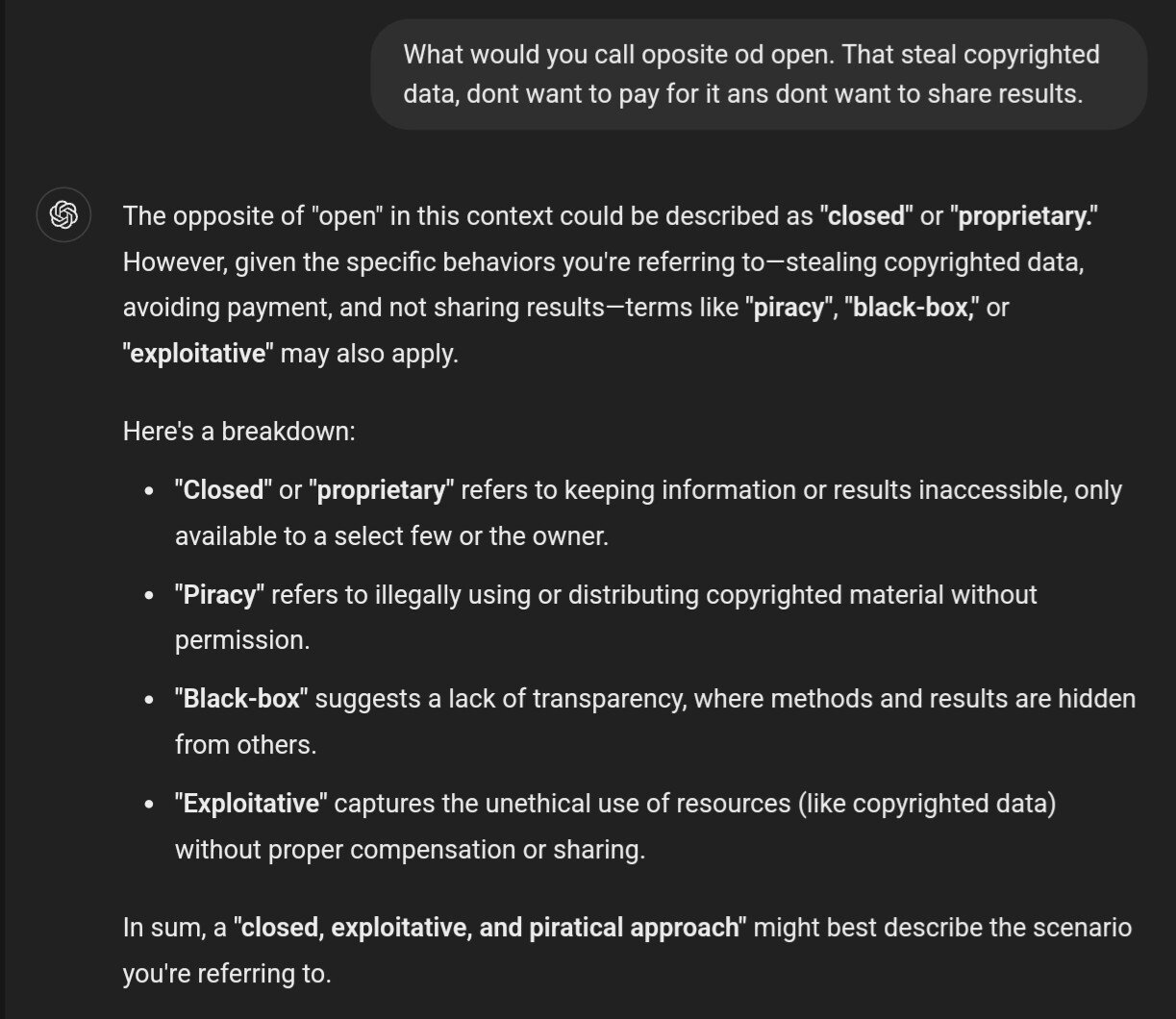No Arch? Strange…
- 1 Post
- 98 Comments

 7·22 days ago
7·22 days agoHow many already launched?

 3·25 days ago
3·25 days agoYou can use (self hosted) gitlab as a registry storage. We do that locally so we have both code, pipeline and containers in the same place.

 171·25 days ago
171·25 days agoThinking when the “leaving packages before door” will stop (by shops refusing to send it that way due to cost related to stealing)
For VR, if you have a Quest headset and good WiFi, you can try ALVR with SteamVR, it works just fine for me while playing BeatSaber but depending on games your milage might vary.
True, if you have extra money, …
It just ‘feel’ bad/wrong like now Google has a brand that they will quickly kill any project they start.
If you create a good product the market will pick it up, throwing cash at random projects and killing it when it doesn’t make huge profit sounds wasteful.
You mean they throw a lot of money at the wall hoping that something will stick?

 141·2 months ago
141·2 months agoWe should start call them that…
Or maybe more like:
ExploitativeAIorExAIhttps://chatgpt.com/share/66e9426a-c178-800d-a34e-ae4883f70ca0


 181·2 months ago
181·2 months agoBut you have a lot of cold air to cool it down, and on a side note it makes your room warmer which you might want in that cold region 😅
(But the energy savings is hard to argue with)

 23·2 months ago
23·2 months agoFunny :)
Hard to be sane with so many broken hardware implementations… 😅
Cudos for the Linux developers!

 3·2 months ago
3·2 months agoIn the last I had very little success rate of those uninstall tools to actually do their job in full. A lot of time they delete some data but almost always they leave some trash behind.
And in the first place, I stopped trusting those external uninstall binaries, they could be designed to remove not only app data but remove your personal data, steal data from your PC or infect it (even if just to investigate why you are uninstalling).

 6·2 months ago
6·2 months agoOne of the reason is that apps can place their files in any place they want so the app manager is not aware of those locations.
Even if it would know then the user still would need a way to remove the app without deleting data, imagine installing Developer IDE or chat app and uninstall process would remove your chats or projects. Imagine app dev accidentally set the “directory that store app data” to /home, it would be bad.
I not once uninstalled app to install different (for example older) version due to bugs in new one.
Having the logic allowing to optionally delete data would introduce additional complexity so most old package managers never introduced that feature.
But I agree that we should slowly introduce a way to to that. Some app managers that manage flatpaks now allow to delete user data after uninstalling app, this now could be done universally because apps installed using flatpak store their data in their own separated/dedicated directory that flatpak engine know about so (unless you give permissions to access other location) thw manager know where the app store data so can offer easy way to remove it.

 1·3 months ago
1·3 months agoOn the server side to send you data, using any web server with mmap support will probably be less CPU intensive than app that handles websocket, but yes, the details matter as when reading a lot of small files vs websocket, then websocket could be better for CPU usage especially when you could generate data.
But once again using plain old http allow you to use the speestest software against any CDN very easy IMO.
Container is just a term for a set of isolation solutions bundled together.
Like file system isolation (chroot), network isolation, process isolation, device isolation…
One of them is ofc chroot, yes container use exactly the same chroot functionality.
So to answer your question, no, you don’t need full isolated container. You can use only chroot.
You just need to pass all required devices ( and match the driver version running in kernel with your files in container and (avoid) more than one app having full unrestricted access to GPU as that would result in issues (but dont know the details so can’t help you with that)).

 1·3 months ago
1·3 months agoYes, but with WebSocket you need to have a server and that will consume some additional CPU.
Without it you only need some random CDN to do the download test.
You can use wayland in container but the easy way probably would require to give whole GPU to the container (but my knowlwdge is limited)
What I do know that this project is doing that: https://games-on-whales.github.io/
That also came up in search results that could help: https://unix.stackexchange.com/a/359244

 1·3 months ago
1·3 months agoMy guess that websocket add additional overhead both in size (header) and complexity as browser and server need to encode/decode it making it more CPU intensive not to mention harder to implement.


Linux is slow at killing apps when you run out of memory because it was designed to also run on low spec hardware even if very slowly (making the ui totally unrensposnive) due to swapping.
This comic is about the
killcommand, how Linux kernel is handling force stopping apps vs (old?) Windows when if App frozed it was hard to close it. Now with modern apps and hardware you very rarely see that as most apps are designed to have asynchronous logic that is correctly handled, but it’s still more or less relevant.